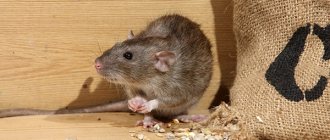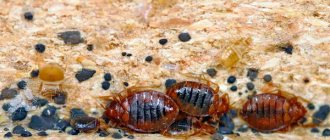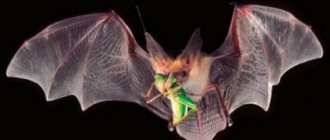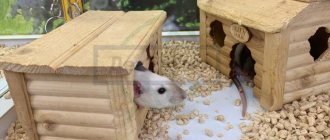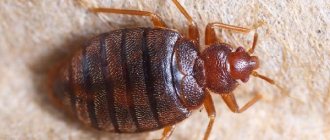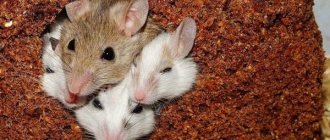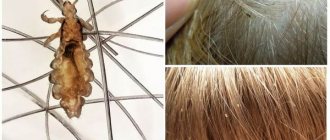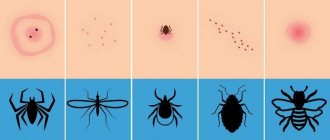The mole is a small mammal covered with fur, unable to see, but perfectly hearing all the vibrations of the earth. Thanks to this, the animal moves well in the dark. It lives and feeds underground, digging huge corridors in which it feeds on earthworms, insects, snails, frogs, and small rodents.
We don't like the mole. And no wonder - in one night it can destroy smooth green grass, undermines the roots of plants, and creates mounds on the surface. How to get rid of moles on your property, folk remedies, poisons and other control methods are described in this article.
You need to know the enemy by sight
Before you start a fight, you need to prepare properly - learn about the strategy and habits of the enemy, which will become a valuable guide to action.
The mole has several features:
- a small rodent with a body length of up to 20 centimeters, black, velvety fur and a rather pleasant appearance;
- at a depth of about 20-50 centimeters below the surface of the earth, the animal digs a system of corridors with a diameter of 6 centimeters and a length of up to 200 meters;
- on the surface the animal creates slides of earth, pushed out of the corridors; the mounds reach a height of several tens of centimeters;
- the rodent patrols the passages every few hours;
- feeds on earthworms, insect larvae, detected thanks to extremely sensitive hearing;
- although it does not feed on plant roots, it can greatly damage them with its activities;
- lives alone;
- is highly active in the morning;
- prefers damp areas, feels great on lawns and beds;
- appears in gardens from early spring to late autumn.
It is worth remembering important features; they are decisive in choosing the method and method of fighting moles in a summer cottage on your own.
A good tip: If mole mounds appear on your property or lawn, use the soil from the mounds to plant potted plants. This land is very fertile.
Dungeon Dweller Lifestyle
The mole digs tunnels. If not for this circumstance, then there would be no harm from them as such. During their work, moles form cavities underground, which are destructive for garden crops. These voids attract other pests: mice, ground insects, shrews. Sometimes even crows and owls “turn out” these tunnels in search of the mole itself, destroying the crop in the process.
Moles love “dacha” soil - it is moist and loose, well fertilized. Many worms live in it, which they eagerly eat. Thus, almost all garden crops, including small trees, suffer.
Preventive measures
It is better to prevent an underground inhabitant from settling in the countryside than to fight and save the plantings. Let's start with preventative methods.
Horizontal grids
A special mesh is placed under the lawn at a depth of 10 cm (so as not to damage the aerator holes of the mesh with garden tools). Cover the top of the mesh with soil and sow grass. The mesh creates an insurmountable barrier for the rodent.
This mesh can be used throughout the garden (lawn) for protection.
There is only one problem: this method is only suitable for a newly laid garden or lawn, where it is possible to form the surface and remove the soil. It's hard to imagine using it in an existing garden.
Vertical grid
You can also place a grid around the perimeter of the site like a deep (up to 60 cm) foundation.
Such a barrier around the perimeter of the site will make it highly likely that shrews will not get into the garden.
Stone strip
A stone ribbon around the site can give a similar effect as a deep foundation. The ditch is located along the fence at a depth of more than 60 centimeters, about 30-40 cm wide, and is filled with stone debris and broken stones. Theoretically, this will be an insurmountable obstacle for the pest.
Features of feeding trees and shrubs with urea
Fruit and berry and ornamental trees and shrubs are fed once or twice a season. Urea is applied over the entire crown projection, scattered over the surface before watering. When using organic fertilizers, the dose of urea is reduced by a third or even half. On average, from 150 to 250 g are applied to an adult fruit-bearing apple or pear tree, 100–140 g to a plum tree, and 30–40 g to a currant tree.
Fertilizing vegetable crops with urea: when used in dry form - 5–20 g per 1 m².
For cucumbers and peas, apply no more than 5–8 g/m² of dry urea,
For zucchini and squash add 10–15 g/m² of urea,
For tomatoes and peppers – up to 20 g/m² of urea.
For watering vegetable crops, you can prepare a solution: 20 g of urea per 10 liters of water. Water at the rate of 1 liter of the prepared solution per plant.
Chemical methods
These are not just ordinary poisons. Their role is to deter the enemy, they help drive the mole out of the area.
Carbide
The most popular drug poured into a hole is carbide. The mole's passages are filled with water, this causes a reaction leading to an unpleasant odor that scares away the animal.
Attention! Be careful, the acetylene released is explosive!
In large quantities, carbide is harmful to plants.
Lawn granules and fertilizers
These are special substances, biodegradable and environmentally friendly, dispersed in the garden. They emit odors that moles, and even dogs and cats, cannot tolerate. Because of this, they simply avoid these places.
Another form of granules are special fertilizers that, in addition to lawn nutrients, contain special aromas that repel moles. The most popular fertilizers are with the aroma of lavender; they will protect against moles and fill the area with a pleasant aroma.
Smoke candles
Candles are set on fire and placed in the passages. The smoke fills the burrows, then, when exposed to moisture, produces a lethal rodent-killing agent. There are also candles that are less harsh, aimed only at driving out moles.
Mechanical means against moles
Listed below are mechanical methods that help fight moles in the garden by repelling them.
Tube-shaped mole traps
Special traps have an elongated shape, the entrances are located on both sides, and the latches effectively block the animal passing through them.
Catch a mole in the garden, as experience shows, is not difficult. Traps are placed in burrows. You need to check their contents every day.
The installed trap must be covered from above. Moles really don’t like open corridors - they simply abandon them. You can cover the exit with the trap with a flower pot. Plastic flower pots are very cheap and weather resistant. Their plastic does not deteriorate over time under the influence of frost and ultraviolet radiation. Soil or sand is poured into the pot, and a brick is placed so that the wind does not overturn it.
A mole, deprived of food, dies after 10 hours, so moving quickly along its corridors, the animal will quickly fall into a trap. A caught mole can be released away from housing, for example, in the forest.
Attention! The mole is a predator; its mouth contains 44 very sharp teeth. Care must be taken when catching an animal or removing it from a trap.
Ejector – sound mole repeller
Electroacoustic devices emit sounds that are inaudible to humans and unpleasant to rodents, with a constant or variable frequency (the latter are more effective because the animal can get used to the sound). Ejector repellers are placed in mole tunnels or inserted into an embankment.
Some devices are also a source of vibration, which scares away animals from their summer cottage. The repeller works thanks to batteries - traditional or solar.
Windmills made from bottles
Windmills, located on pegs buried in the ground, emit sounds and vibrate in the wind, transmitting vibrations to the ground.
Empty bottles buried in the ground so that the wind whistles in the upward-pointing necks work successfully. Periodically, the bottles are moved to another place, because the mole can get used to them.
Firecrackers
Special devices filled with fireworks that are installed in an embankment. The mole, touching them, turns on the detector, which launches fireworks. The mole has no chance.
We use sound repellers
These are gentle products that do not harm animals, but simply scare them. But the effect from them is not so good. Sound is a weapon only in windy weather.
Acoustic methods
Acoustic electrical devices can be purchased at any specialized store. They have long been known and tested - “Antikrot”, “Krotogon” and others. The sound gives a signal of danger, the animals are hiding. There are also disadvantages: the owners of the site also have to endure the nasty sound.
A cheap remedy is bottles buried in the ground, so that the neck sticks out on the surface. A frightening roar is created by the wind. Tie empty tin cans around the entire area or use simple pinwheels. The sound is not loud, but it helps.
Ultrasonic repellers
Modern method. A device similar to a peg is inserted into the ground in the center of the site. It emits a signal that humans cannot hear, but the animals scatter away. The waves also drive out other types of rodents.
Firecrackers
Saltpeter and gunpowder are dangerous, but they help. The firecracker is placed in a pothole and explodes. One explosion is not enough, it is necessary to arrange fireworks throughout the entire area.
Natural methods on how to remove a mole from the garden
If you are not satisfied with chemical and mechanical methods, there are still natural or simple methods that help fight moles in your summer cottage.
Plants that repel moles
Some plants planted in the garden repel moles with their aroma and secreted substances. Effective herbal remedies for moles:
- basil;
- marigold;
- garlic;
- black elderberry;
- thuja
Grated cloves of garlic (or cloth soaked in its juice) are placed in mole holes. You can pour humus from black elderberry leaves, garlic or thuja branches into the passages.
Natural barriers - oils
Preparations containing natural oils will repel moles from the garden if used regularly in accordance with the instructions on the package. Oils are sold in the form of concentrates; you need to make aqueous solutions and spray them on the area in your garden plot that is susceptible to mole attacks.
5 Basic rules for using carbamide (urea) in the garden
INFORMATION ABOUT THE DRUG
Urea, or urea, is a chemical compound that is the amide of carbonic acid CO(NO2)2. This is an organic compound, but it is usually classified as a mineral nitrogen fertilizer.
Appearance of carbamide (urea). They are colorless, odorless crystals. The finished product looks like round granules of white, grayish or slightly yellow color.
Composition of carbamide (urea). This is the most concentrated of nitrogen fertilizers: pure urea contains about 46.2% nitrogen!
Properties of carbamide (urea). It is highly soluble in water; solubility increases with increasing temperature. In an aqueous solution, urea hydrolyzes to form ammonia and carbon dioxide, which determines its use as a mineral fertilizer.
Use of carbamide or urea. Used for root and foliar feeding, as well as to combat pests and diseases.
Source
Traditional methods
These methods are a collection of folk wisdom collected from various gardeners and industry forums. Some methods are quite aggressive and are not recommended for people with weak nerves.
- Hair. As it turned out, the mole does not like the smell of human hair. Some gardeners roll up the hair collected after cutting and stuff it into holes.
- Animal fur. The hair of cats and dogs gives a similar effect. If there is fur left after grooming your pet, you should not throw it away; it will be useful as a means to get rid of moles in the garden. The wool is laid out in holes.
- Fish remains - according to reviews, the animal hates the smell of herring. This method was shared by a successful gardener. He buried a piece of raw herring every 1.5 m, and since then the pest has disappeared from the site.
- Kerosene. Some summer residents claim that rags soaked in kerosene placed near burrows effectively repel the pest.
- Animal feces. Moles are especially intolerant of cat feces. In this unexpected way, pets will help fight the pest. It is worth collecting feces and placing them directly in the holes.
- An interesting method for removing a mole from a hole from advanced summer residents is to release carbon monoxide into the hole, obtained from the exhaust pipe of a car or tractor.
- Pouring holes, or flood. Place a garden hose in the hole and let water run for an hour. The mole must jump out into one of the exits, the other exits must be covered. You should place a trap near the exit.
- Vinegar. An effective remedy is vinegar. Dilute the vinegar in a large watering can and pour it into the hole. Over the next few days, repeat pouring the solution into adjacent mounds. Animals do not like the pungent smell of vinegar.
Foliar fertilizing with urea: why is it needed and how to do it correctly?
If there are signs of nitrogen starvation in plants, as well as in case of shedding of ovaries, it is useful to carry out foliar fertilizing with urea. Urea has an advantage over nitrate and other nitrogen fertilizers: it burns plant leaves less. The consumption of urea solution for foliar feeding is approximately 3 liters of working solution per 100 m².
The crowns of fruit trees are sprayed at a concentration of no more than 0.5% (50 g of urea per 10 liters of water). It is desirable that the urea solution in a fine-droplet state falls on both the upper and lower sides of the sheet, wetting it evenly.
For indoor plants, a urea solution for foliar feeding is prepared at the rate of 5–8 g of urea per 1 liter of water. If the plants have very pale leaves (which indicates a nitrogen deficiency), then 3 g of magnesium sulfate (magnesium sulfate) should be added to 1 liter of solution. The use of magnesium sulfate will reduce the risk of burns and increase the effectiveness of feeding, since magnesium is part of chlorophyll.
Foliar feeding is carried out in the morning or evening.
Urea can also be used to control pests and diseases.
When the first warm spring days arrive (average daily air temperature is +5 °C and above) before the buds begin to swell, a concentrated urea solution (500–700 g of urea and 50 g of copper sulfate per 10 liters of water) is used to spray fruit trees against pests, as well as from scab and other diseases.
Early spring spraying helps delay flowering and reduces the likelihood of damage to flowers by spring frosts in heat-loving crops (cherry plum, apricot and others).
In the photo: Treatment of plants with urea solution
How to get rid of a mole in your dacha forever?
Now let's look at more drastic methods of how to remove the pest from a summer cottage.
Poison bait for moles
Poisonous baits (mostly in the form of granules or powder) are very tasty for moles. Poison baits are placed in underground corridors to lure animals.
Traps, mole traps
There are several models of mole traps designed to catch moles, rats, and voles. A hole is opened at a distance of 20 cm and a trap is set. Placement of the trap should be done carefully so that the channel is clean and not contaminated. The clamp is secured with a fixing plate. The trap is covered with turf. Place an opaque bucket upside down on top. The edges of the bucket are sprinkled with soil.
Attention! All operations must be performed with gloves so that the animal does not smell human odor.
Smoke
You can also blow sulfuric acrid smoke into the tunnels, smoke that releases repellent or poisonous gas. For smoke to be effective, it must be used simultaneously in all inhabited burrows. These drugs also work on voles and other rodents.
The mixtures are prepared on the basis of potassium nitrate mixed with powdered sugar. The more sugar, the more smoke.
Be careful! Such mixtures burn intensely, spark, and burning pieces of the composition can fly off, causing burns. Take care of your eyes and skin; you need to set fire to the mixture from a distance.
There are many methods and ideas on how to get rid of moles in the garden. Different methods will be useful in different conditions. The Mole is not an easy opponent and stubbornly returns to its tunnels. When fighting it, you need to remain patient and repeat the procedures regularly. It is better to act differently and try different methods to get rid of the underground tenant of the vegetable garden and garden.
When choosing a method, you should take into account the safety of the inhabitants of the dacha, including pets. Some types of poisons can be eaten by chickens, cats and other pets. Particular attention should be paid to the possibility of children having access to poisons, explosives, traps and snares.

